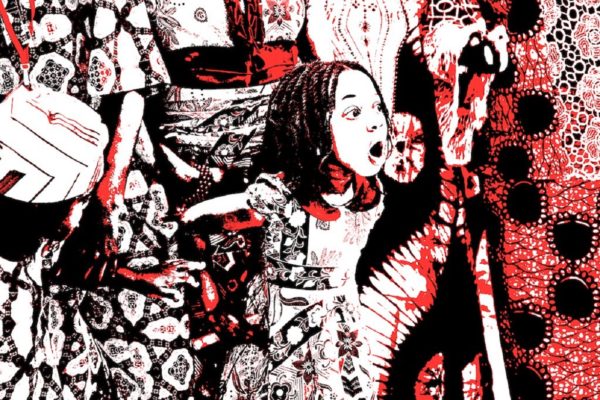
Arriving on the East African coast to shoot his 1999 PBS documentary series Wonders of the African World, Harvard University Africana scholar Henry Louis Gates, Jr. interviewed Sheikh Badawi, “one of Lamu’s most venerable Islamic scholars,” asking him whether Lamu, the oldest Swahili town in Kenya, is an Arab or African civilization. It has been an Arab civilization for more than a thousand years, Sheikh Badawi replies, and when Gates asks him whether he—a black African—carries African ancestry, he tries his best to hold back his laughter, then answers that he carries little if any African ancestry, and that he can trace his own lineage back to Arabs who emigrated to the East African coast over the last few centuries and even back to the Prophet Muhammad himself.
On this coast you will find such black people who say they are not Africans. Natives who proclaim Arab and Persian identity and claim they can trace their lineages down to specific regions in the Arabian Peninsula and north of the Persian Gulf. You will find them in Lamu on Kenya’s northern coast, all the way to the islands of Zanzibar across the border in Tanzania. They are mostly ethnic Swahilis who speak Swahili, a beautiful language spoken as the lingua franca in seven East African countries: Kenya, Tanzania, Uganda, DR Congo, Rwanda, Burundi and Mozambique.
It is something I heard over and over again in the classroom growing up: that the Swahili language historically emerged as a lingua franca, a pidgin, between African languages and Arabic on the East African coast where Arab traders had been arriving in large numbers for several centuries. Similarities between some Swahili words and their equivalents in Arabic were used to support the argument. The word minister for instance translates to wazir in Arabic and waziri in Swahili. Earth translates to ard in Arabic and ardhi in Swahili, and so forth. Swahili literature was even originally written not in Latin script but in Arabic script.
One of the renowned scholars the coast has produced, Professor Ali Mazrui, seemed enchanted with the idea in his book The Swahili, in which he attempts to trace the development of Swahili from its supposed emergence from a pidgin between Arabic and Bantu languages into a creole that was later Africanized. The Encyclopedia Britannica, as well, still carries this idea in its entry on the Swahili language:
“The language dates from the contacts of Arabian traders with the inhabitants of the east coast of Africa over many centuries. Under Arab influence, Swahili originated as a lingua franca used by several closely related Bantu-speaking tribal groups.”
This union was not presented as an equal marriage between the two cultures. Swahili poetic wealth was attributed to the linguistic and cultural oomph injected by Arabic into Bantu languages. A few hundred kilometers from the coast at Milimani Primary School in Naivasha, Kenya, we recited Arabic words during compulsory Swahili language lessons. Our Swahili teacher encouraged us to learn Arabic words in order to improve our Swahili proficiency.
Yet this language happens to be a treasure Africa cannot afford to give away. Apart from being one of the most widely spoken languages on the continent—enjoying over 100 million speakers—it happens to be exceptionally beautiful to the African ear. To listen to Swahili spoken in native fluency is to be immersed in a musical performance. To master the language is to learn how to stage the performance and get carried away in its self-assured rhythm, to become a bard of your own experiences. A flawless deliverance of Swahili is a cultural badge of honor in East Africa.
No wonder, then, that those who live near the coast are openly contemptuous of inland speakers of the language like me, those of us who can hardly construct a sentence fit for their native ears. Tanzanians, arguably the most fluent in the language, similarly do little to hide their amazement at the ineptitude of non-Tanzanians to converse smoothly in the language. “Swahili was born in Zanzibar,” one saying goes, “and grew up in Tanganyika, died in Kenya, was buried in Uganda, with its ghost fleeing to the Congo”—a saying that more or less tells you who can speak the language better than the other.
Swahili enjoys external visibility as well. It seems to be the African language of choice for producers of Western pop culture. One of America’s favorite lion cubs had a Swahili name, Simba, and in one of the memorable film moments of the ’90s, Simba is learning to say hakuna matata, no worries, in the 1994 blockbuster movie The Lion King. In American films, everyone in Africa, including the animals, seems to speak Swahili.
Hearing as a primary school child that Swahili emerged as a result of Arab activity along the East African coast was confusing to me because Swahili is so closely related to my own mother tongue, Gikuyu. I wondered why my Bantu mother tongue shared such a vast amount of basic vocabulary with this language carrying Middle Eastern roots. To resolve this conundrum I surmised that the dominance of the Swahili language in Kenya must have so strongly impinged itself on my mother tongue that we, the Gikuyu, ended up gulping huge amounts of loan words from Swahili into our own vocabulary.
But if the Swahili language has Arab roots, then surely even Swahili civilization itself must have Arab roots as well: such is the slippery nature of the politics of language. For over one thousand years magnificent civilizations of the Swahili thrived along the East African coast. Records of them go as far back as the Periplus of the Erythraean Sea, a Greco-Roman document published in the first century C.E. By the 15th century a string of prosperous Swahili city-states thrived along the East African coast. Their prosperity was based on Indian Ocean trade with far-flung regions of the world and with Africa’s interior. Much of their glory was unceremoniously terminated by Portuguese plunder in the 16th century.
After we wrote our final papers at Milimani Primary School, we departed to the coast for a final school tour, an old ritual at the institution. We travelled to Mombasa, one of Kenya’s most popular tourist destinations and also one of its oldest cities, tracing its history back to the Swahili city-states that dotted the coast since 800 C.E. In one site after another, we took in the city’s “Arab heritage.” The region’s Islamic religion and culture is just one piece of evidence of Arab influence, we were told, in addition to its language and architecture.
The East African coast still carries these relics from past Swahili glory, such as the Ruins of Kilwa Kisiwani, Songo Mnara, Zanzibar’s Stone Town, and Lamu Old Town in Kenya. One of the most studied Swahili sites by archaeologists from around the world is the Ruins of Gedi in Kenya. Here a flourishing medieval scene has been uncovered by decades of study: a robust town wall, a palace, mosques and tombs of the Gedi elite—an elite that left abundant evidence of enjoying the finer things in life from far and wide, including ceramics, beads and currency from China, India, Persia and the Near East.
When the British invited themselves to the Swahili Coast in the 1880s, they found this Islamic society, this cosmopolitan language, this impressive culture, and concluded that this could not be the work of Africans; it had to be the work of Arabs from the Middle East.
It has happened many times before as part of the regular menu of British explorations of Africa: an Eton-Oxbridge brat arrives in Africa having thoroughly imbibed caricatures of Africa like Henry Rider Haggard or Joseph Conrad. The explorer is brave enough and well prepared to venture into the heart of darkness. But every now and then the explorer encounters the “light” of civilization in Africa—buildings and writings and whatnot—and here he is quite puzzled. No way Africans did this, he mumbles to himself, and promptly begins looking for other candidates who could have been responsible for his “discovery.”
This he must do for there is no White Man’s Burden to lyricize about otherwise. You won’t convince anyone you’re hammering and conquering a people to civilize them if those people seem civilized in the first place. To justify its savagery in Africa, Europe had to convince itself that it was not carrying out atrocities against ordinary human beings, but rather against “savages,” and savages, in their opinion, are not supposed to build cities. If you found a city among savages, you had to conclude it was built by outsiders, a point the prominent African American intellectual and Pan-Africanist W.E.B. DuBois makes succinctly in his 1947 book The World and Africa:
In defense of slavery and the slave trade, and for the upbuilding of capitalistic industry and imperialistic colonialism, Africa and the Negro have been read almost out of the bounds of humanity. They lost in modern thought their history and cultures. All that was human in Africa was deemed European or Asiatic. Africa was no integral part of the world because the world, which raped it, had to pretend that it had not harmed a man but a thing.
DuBois’s assertion was vindicated in Southern Africa, where the ruins of Great Zimbabwe presented this puzzle of cities among savages: a stone city dating back to the 11th century which served as the capital of the Kingdom of Zimbabwe, a civilization built by ancestors of the Shona people of Zimbabwe.
The Portuguese and later British explorers who first encountered Great Zimbabwe promptly dismissed the idea that the city was built by black Africans residing in that part of the continent. They somehow concluded it was the work of ancient Phoenicians, and the cretins actually started digging below the ruins to find the records the Phoenicians must have left behind for them to find, causing great damage to the site in the process. Other European explorers went overboard with the speculations and associated the site with the famed Biblical pair King Solomon and the Queen of Sheba. Anyone else could have built the city, except the people who actually lived there.
African bodies faced similar reassessments in the face of these European encounters. In his quest to locate the source of the Nile River, British explorer John Hanning Speke passed near a huge lake in East Africa, one he would later name for the reigning British monarch Queen Victoria. Here he found complex kingdoms like that of the Buganda, and again, concluded that this was not the work of black Africans residing in the area. He declared that a “superior race” of people had emigrated there and set up the kingdoms. His Journal of the Discovery of the Source of the Nile strengthened the so-called Hamitic hypothesis, which posited that a “Caucasoid” race had moved into black Africa and founded civilizations.
The race-obsessed Europeans who followed Speke into East Africa used his theories to explain anything magnificent they found in the region. Near the same lake, for instance, they encountered a complex society of the Banyarwanda, where they were soon hypnotized by the physical appearance of the Tutsi, an upper caste of a kingdom which also included two other castes, the Hutu and the Twa. Exotic theories of origin were promptly devised to explain the appearance of the Tutsi and the sophistication of the kingdom they ruled over. Conjectures ranged from ancient Egypt, India, Tibet, the south Pacific; for Etienne Brosse, a hopelessly mesmerized Catholic priest, the Tutsi could have originated from the very Garden of Eden.
Swahili civilizations presented the same puzzle. In his 1955 presidential address to the South African Archaeological Society, J. F. Schofield presented exciting new research about the Ruins of Gedi to his fellow members:
It was evident from the first that the ruins were the remains of one of those settlements of people from Arabia or Persia which were founded during the medieval period along the east coast of Africa and through which passed such trade as then existed with the vast interior of the continent. J. S. Kirkman’s book The Arab City of Gedi is the authoritative answer for which we have been waiting.
To European intellectuals, there was no question at all about who was responsible for building the Swahili city-states. The title of the book Schofield was introducing, The Arab City of Gedi, represents the honesty with which early European intellectuals subconsciously dismissed the notion that these cities could have been built by Africans.
The evidence that Swahili civilization was not an import from the Arab Middle East, however, is not contained in some radical negritude rags. A new generation of non-colonial archaeologists and historical linguists, Western and African, have expended considerable effort unraveling the mysteries of Swahili society in the last couple of decades. They have dug Swahili historical sites inch by inch and studied the Swahili language extensively. Their findings, however, continue to be drowned by dominant colonial narratives of Africa.
In his piece Early Swahili History Reconsidered, the historian Thomas Spear describes how archaeologists like Mark Horton have been digging along the Swahili Coast and have all but destroyed prevalent misconceptions about Swahili society, effectively dispensing with the idea that Swahili cities were built by Arab immigrants. Horton worked on Shanga, a site located at Pate Island on Kenya’s northern coast during the 1980s. His findings, laid out in his 1996 book Shanga, were exciting.
Tracing the origins of the region all the way back to its pre-Islamic roots, Horton discovered that African iron workers, farmers and fishermen established a community here in the 8th century C.E., living in wattle and daub houses and establishing trading relations with merchants from the Persian Gulf, exporting iron, ivory, timber and slaves. As will ordinarily happen during contacts between people from different cultures, Africans began to borrow from the culture of peoples from across the sea with which they traded, most notably gradually borrowing the new religion of Islam.
The prosperity of Shanga continued to grow with time: they started building in stone and coral rag, and trade was now carried out with merchants from Arabia, with imports coming in from places as far away as China. Between the 8th and 14th centuries Shanga grew from a small fishing village to a prosperous Muslim trading town of stone walls and houses, mosques, textile and iron production and the consumption of fine goods from Asia and the Middle East. This is where Horton’s most striking discovery comes in: that this development was the work of Africans. So much so that the town retained the very plan it had as a small community of African farmers, as Spears explains:
Building plans and styles evolved in situ as people adapted new materials and techniques to older forms. New stone houses were built on older mud foundations; their roofs continued to be pitched and thatched until late in their development; the overall town plan was retained even as individual mosques, tombs, and houses were slowly reoriented to Mecca; and the first small timber mosques built by foreign merchants were repeatedly redesigned, rebuilt in coral, and enlarged to accommodate an expanding local Muslim population.
African agency was evidently behind the rise and prosperity of Swahili civilizations. In the trade between Africa and the Middle East, Africans assimilated aspects of Eastern culture, most notably Islam, but also their material culture such as the architecture. There was Arab immigration to the Swahili Coast, for sure, but it was limited and did not feature waves of immigrants descending upon a primitive land and building “Arab cities.” Any immigrants to the coast assimilated into emerging Swahili communities.
The conclusions reached about the Swahili language itself by Thomas Spear and Derek Nurse should therefore come as no surprise: that it is absolutely a Bantu language, an African language that wholly emerged in Africa among Africans. In their monograph The Swahili, they present what historical linguistics has been able to unravel about the Swahili language: that its history can be traced to a group of Bantu speakers who settled two thousand years ago around Africa’s highest mountain, the Kilimanjaro.
Known as the North East Coast speakers, they differentiated themselves with time into Pare, Seuta, Ruvu and Sabaki speakers. The Sabaki speakers then spread out along the East African coast and in the process distinguished themselves into at least five very closely related languages spoken in the region today: Ilwana and Pokomo near the Tana River in Kenya; Mijikenda in Kenya and Tanzania; Comorian in Comoros and Madagascar; and the crown jewel of the Sabaki languages: Swahili, which spread all along the coast from Somalia to Mozambique. These Sabaki languages are so closely related to each other that Swahili, for example, inherits almost all of its vocabulary from its Sabaki background, as Spear notes in Early Swahili History Reconsidered:
Swahili retains a high degree of inherited vocabulary, grammar, and sounds. Of a 100 word list of basic vocabulary, for example, 72-91 percent is inherited, while only 4-17 percent are loans from other African languages and 2-8 percent from non-African languages.
Loanwords from Arabic are included in this “2-8 percent from non-African languages.” Swahili clearly borrows a very small proportion of its vocabulary from Arabic, but these few loanwords were deemed sufficient basis for declaring that Swahili is not a conventional African language but a hybrid, a lingua franca, a creole, birthed by the arrival of Arabs on the East African coast. And so a beautiful language was stolen from Africa.
In contrast, Spanish is not regarded as “a lingua franca which developed as a result of the interaction of Arabs and Europeans in Spain.” Much of Spain was occupied for centuries by an Arabic-speaking Middle Eastern power, the Umayyad dynasty. As a result the Spanish language today borrows 4,000 words—or 8% of its vocabulary—from Arabic, an influence I happened to notice the very first time I took a Spanish class. But Spanish nonetheless remains understood as a Romance language, a European language, just as Swahili should be fully understood as a Bantu language, an African language.
The argument so far might seem to assume that Arabness and Africanness must necessarily be separate and contrasted. It can be pointed out, correctly, that Arab ethnicity and culture is part and parcel of the huge diversity of the African continent, and therefore to be Arab is also to be African. Several African countries even have Arabic as their official language. But as we acknowledge this reality, we must also acknowledge how Arabness has been used to construct notions of otherness and inferiority in Africa. To be Arab in Africa—in the Sudan or the East coast for instance—has been used to mean not being African, or as Sheikh Badawi of Lamu explained to Professor Gates: I am Arab, not African. The legacy lives on.
The heart of the matter is whether Africa can also borrow from other cultures without losing its claim to cultural ownership. To justify the colonial occupation of Africa, the idea of a White Man’s Burden to civilize Africa was necessary. This propaganda created a savage image of Africa and Africans, and any evidence suggesting that Africa was neither savage nor uncivilized before the European colonial invasion was swiftly explained away, suppressed, or attributed to people from outside the continent. Even though borrowing from other cultures is an ordinary feature of cultural growth among all human groups, any indication that an African culture had borrowed from other cultures outside the continent was taken to mean that the whole culture was therefore imported and un-African. Just as we had to reclaim the ruins of Great Zimbabwe, so must we reclaim Swahili, the crown jewel of African languages, wholly, for Africa.
I have returned to the Coast many times since that school trip all those years ago. Soon I will return again to visit the medieval Swahili sites we didn’t get to see with my primary school class. But this time, I will tread more confidently on these grounds. I will not bring the admiration of an outsider looking in, of an African looking at a foreign culture. I will hold my head up high to delight in the marvelous achievements of my Swahili brothers and sisters, just as I have always basked in the musical glory of their beautiful language.
ABOUT THE WRITER:
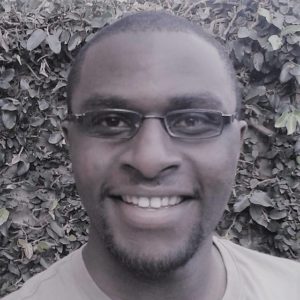 Kamau Muiga is a graduate student at the University of Nairobi’s Department of Political Science and an Adjunct Lecturer in the social sciences at the Jomo Kenyatta University of Agriculture and Technology (JKUAT) in Nairobi, Kenya.
Kamau Muiga is a graduate student at the University of Nairobi’s Department of Political Science and an Adjunct Lecturer in the social sciences at the Jomo Kenyatta University of Agriculture and Technology (JKUAT) in Nairobi, Kenya.


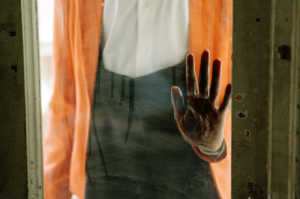


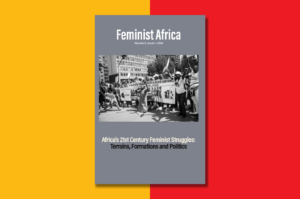
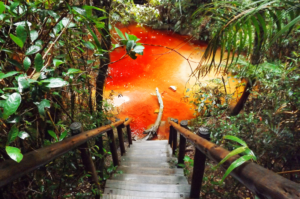
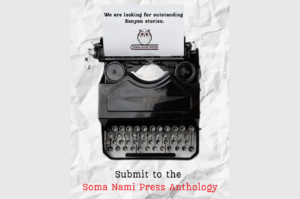

Marion Kamau July 18, 2024 03:18
What an inciteful article! I have learnt so much.